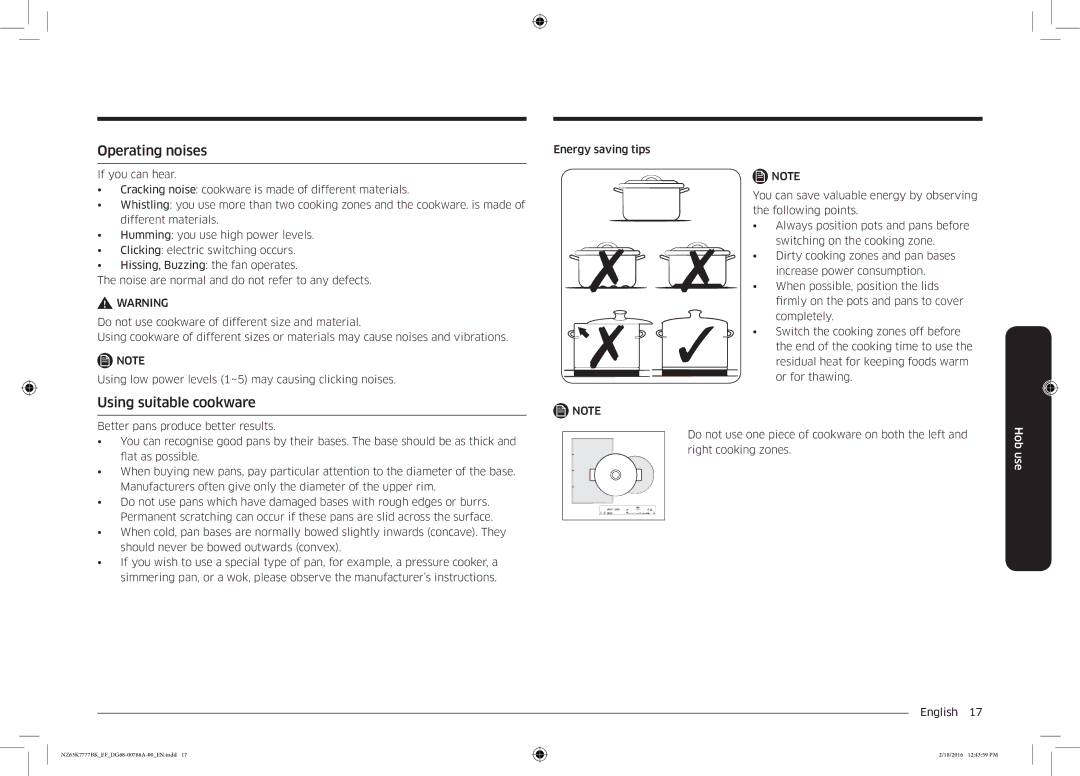
Operating noises
If you can hear.
•Cracking noise: cookware is made of different materials.
•Whistling: you use more than two cooking zones and the cookware. is made of different materials.
•Humming: you use high power levels.
•Clicking: electric switching occurs.
•Hissing, Buzzing: the fan operates.
The noise are normal and do not refer to any defects.
![]() WARNING
WARNING
Do not use cookware of different size and material.
Using cookware of different sizes or materials may cause noises and vibrations.
![]() NOTE
NOTE
Using low power levels (1~5) may causing clicking noises.
Using suitable cookware
Better pans produce better results.
•You can recognise good pans by their bases. The base should be as thick and flat as possible.
•When buying new pans, pay particular attention to the diameter of the base. Manufacturers often give only the diameter of the upper rim.
•Do not use pans which have damaged bases with rough edges or burrs. Permanent scratching can occur if these pans are slid across the surface.
•When cold, pan bases are normally bowed slightly inwards (concave). They should never be bowed outwards (convex).
•If you wish to use a special type of pan, for example, a pressure cooker, a simmering pan, or a wok, please observe the manufacturer’s instructions.
Energy saving tips
NOTE
You can save valuable energy by observing the following points.
•Always position pots and pans before switching on the cooking zone.
•Dirty cooking zones and pan bases increase power consumption.
•When possible, position the lids firmly on the pots and pans to cover completely.
•Switch the cooking zones off before the end of the cooking time to use the residual heat for keeping foods warm
or for thawing.
NOTE
Do not use one piece of cookware on both the left and right cooking zones.
English 17
Hob use
2/18/2016 12:43:59 PM
